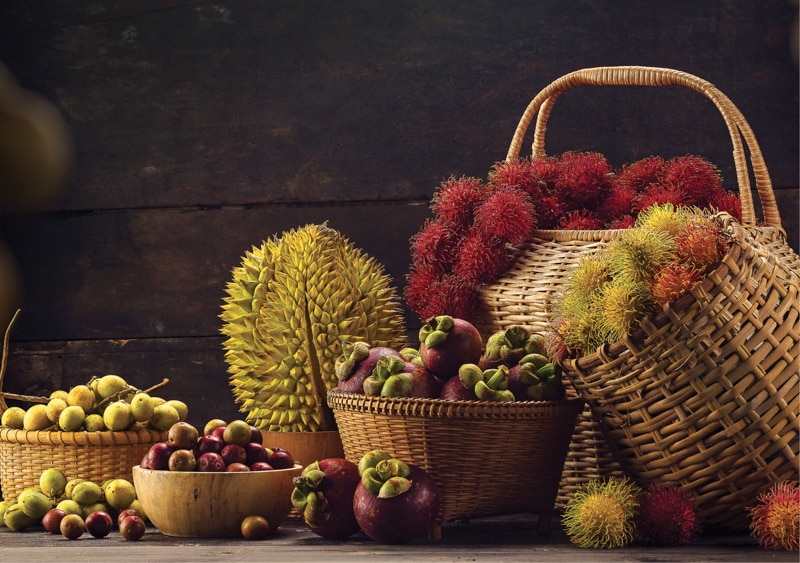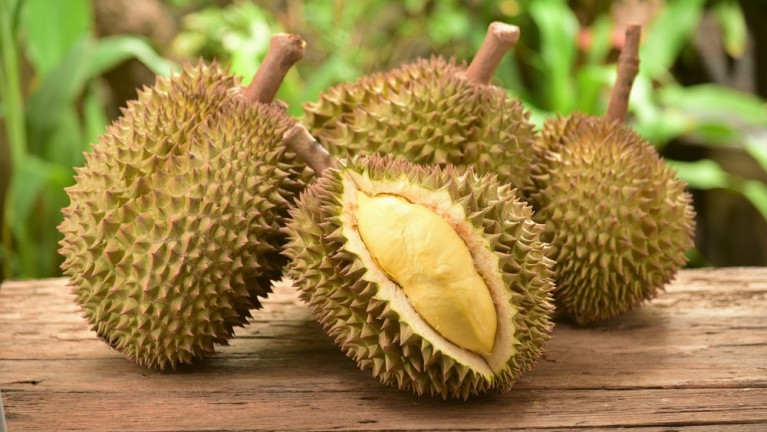It’s Time to Taste the Exotic Seasonal Fruits of Sri Lanka

Yes, it is that time of the year again where you will see the sides of roads all across the
island lined with towered layers of colorful fruits. If you are visiting Sri Lanka anytime
between June-August, you HAVE to try these exotic seasonal fruits of Sri Lanka.
Rambutan
Rambutan is the fruit that dominated the island during this season. It has a leathery ruby
reddish skin which is topped with flexible needles, and the fruit gets its name from a Malay
word ‘rambut’, which means hairs. Some hard work is needed to peel off the tough skin but
you are rewarded with juicy flesh (similar to the texture of grapes) covering a seed
(similar to lychee).
The primary region that rambutan comes from is Malwana – with plenty of trees growing and
people residing in the region owning at least 1-2 trees. This fruit ripens on the tree
itself hence cannot be plucked in advance. Vendors purchase the fruit from tree owners and
distribute them around the country. At the beginning of the season, the fruit is priced at
about 10-12 LKR and these prices decline gradually as the season draws to an end.
Rambutan is rich in vitamins and minerals and is one of the safest options out there because
no other chemical is injected into the making of the fruit. Eating five rambutans a day is
said to decrease the chances of fatal diseases such as cancer. It also helps in preventing
diarrhea and reducing blood pressure. The portability of the fruit makes it popular with
travelers who also use it as a great thirst quencher.
Once the rambutan indulgence is complete, responsibly dispose off the shells because these
are a breeding ground for Dengue mosquitoes. So while enjoying the fruity goodness, do your
bit to help keep the country clean.

You will see durians stacked right next to the Rambutans on road sides during your tour of
Sri Lanka. They are much bigger in size and they have a geryish green thorny husk. Inside,
you will taste some creamy, custard like white flesh, very similar to Jackfruit.
Mangosteen
Joining these two seasonal fruits is the purple colored Mangosteen – which is supposed to be
wine-red when ripe and is found mostly in dry zone areas such as Kalutara, Kegalle, Kandy,
Matale and Gampaha.
About the size of a tangerine, the soft coating of the fruit can be easily pressed and
ripped apart, opening its way to the actual sphere shaped mangosteen which is neatly sliced
by nature into wedges, thereby making it very easy to consume. The flavor is mildly sweet
with a bit of zing. Be careful not to let the juice of the skin and the fruit drip onto your
clothes as the stain is irrevocable.
This fruit is also available in a few other countries including Indonesia, Thailand,
Malaysia and India. South East Asia refers to mangosteen as the Queen of Fruits with trees
going as high as 20-60 feet. While the fruit does have some medicinal value for treating
certain skin problems, eating too much may be too heaty for your body, resulting in rashes
and such.